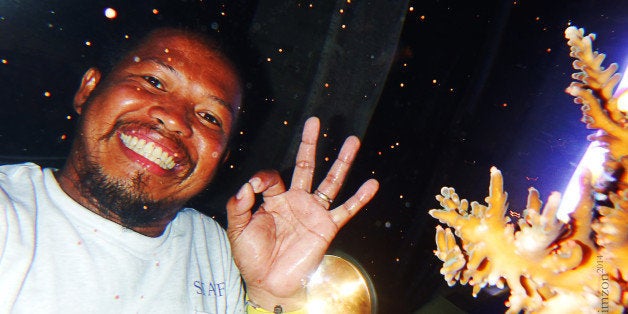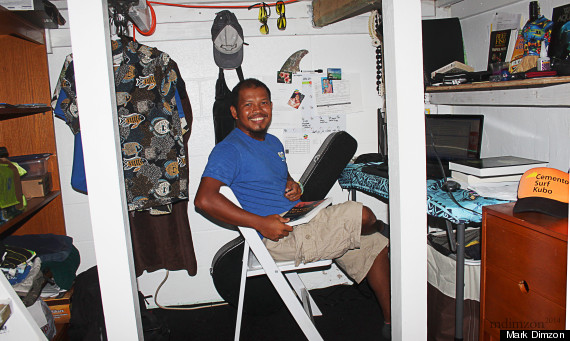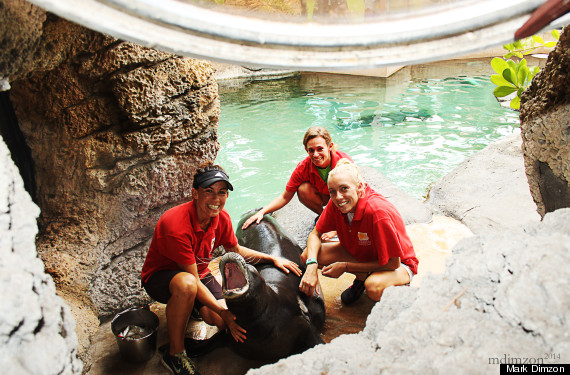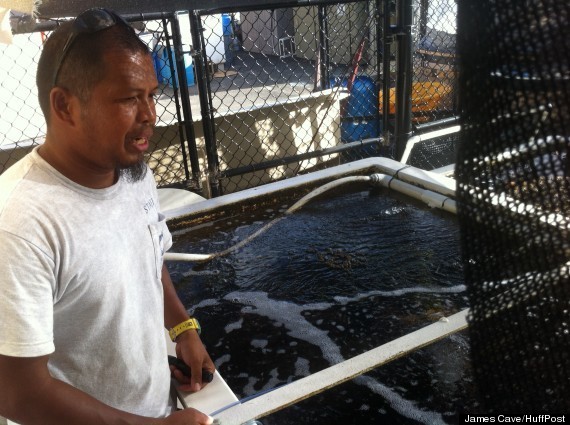
People spend thousands of dollars to have giant aquariums in their homes, but this guy actually gets paid to live in one.
Meet Mark Dimzon, an aquarium biologist in the Live Exhibits Department at the Waikiki Aquarium in Honolulu, Hawaii. Dimzon lives in an 8-by-8-foot room next to the aquarium tanks and shares a wall with the monk seal exhibit.
Ask him what it's like to live in an aquarium, and he might tell you a story about a night shortly after he moved in, when a loud roar jerked him awake on the top bunk, making him smack his head on the low ceiling.
“The monk seals, Maka and Hoa, just wanted me to know that they were there,” he says, laughing about it. “We’re good now.”

Dimzon’s dorm is a remnant of the Waikiki Aquarium resident program, which started more than 30 years ago to "cushion the financial burden of attending the University of Hawaii," the application stated. It also provided the aquarium some nighttime support and security.
The program was closed last year because of costs, but the aquarium's executive director, Andrew Rossiter, decided to save one of the rooms to offer visiting scholars or new employees from the mainland a place to crash while they looked for housing.
For Dimzon, however, the extra room was a lifesaver.
Dimzon is from the Philippines, where his family still lives. Last year, the disastrous Super Typhoon Haiyan struck his home country just as he was hired for the Waikiki job.
"Everything collapsed," he says. "I was worried I’d lost the job before I even started.”
But when he finally reconnected with the aquarium, he was told he could still have the job. The aquarium expedited the process and offered him the dorm room for lodging.
“It was very hard for me to move here," Dimzon says, "because I have two babies." But, thanks to the dorm room, Dimzon is able to send 80 percent of his salary to his family and his neighbors to help their recovery efforts.
The situation is "mutually beneficial,” according to Rossiter, who sees no pressure to rush Dimzon out.

Now, Dimzon gets his mail delivered to the aquarium, he makes his meals there, and he also does extra research work, because, he says, “I gotta give them something in return, as a service.”
Dimzon researches how corals spawn and propagates them in the hopes of aiding conservation and reef restoration projects. His goal, he says, would be to make Waikiki Aquarium "a Noah’s Ark for other coral species that are threatened in the wild.”


It's a pretty simple life, according to Dimzon, and it's one that he's settled into.
On a typical day, he wakes up at 5:45 a.m., checks emails and chats with his family back home in the Philippines -- an 18-hour time difference. Then he shuts off the perimeter alarm before colleagues come to work, makes breakfast in the staff kitchen and checks the maintenance on the pumps, the protein feeders and the lights. He also cleans the windows of nine aquarium tanks, some of which are so big he has to swim down into the tank.
By 3:30, he says, he's checking out his research tanks, then surfing and relaxing. He eats dinner on the roof while the sun sets (this is unique perk of the job; the roof is off-limits to the general public), then he makes one more perimeter check before going to bed.
“When I was a kid," Dimzon says, "I always wanted to work in an aquarium. That’s why I got a degree in marine biology. Now, I’m living inside an aquarium and having these animals as my neighbors. It’s a childhood dream come true.”


